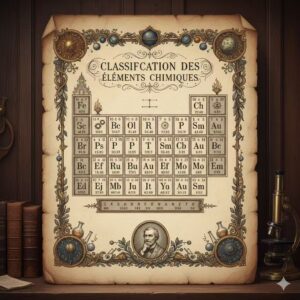IB Chemistry 2025: A New Era of Structure, Reactivity, and Discovery
The International Baccalaureate (IB) has always been about more than exams. It is about inquiry, curiosity, and preparing students to see the world through a global lens. With the launch of the updated IB Chemistry curriculum, the subject takes a bold step forward, offering learners a more connected, concept-driven, and inspiring experience.
A Subject Re-Engineered
The updated syllabus is built on two powerful organizing ideas: Structure and Reactivity. Together, they create a thread that links every sub-topic in the course. The message is clear: chemistry is not a collection of isolated facts. It is a living discipline where structure shapes reactivity, and reactivity transforms structure.
Instead of overwhelming students with content, the new course focuses on conceptual depth. Areas once tucked away in optional modules, such as Biochemistry, Medicinal Chemistry, Materials, and Energy, are now integrated into the core and higher level curriculum. Every student, whether taking Chemistry at SL or HL, will engage with real-world applications.
Curiosity at the Core
Each topic begins with Guiding Questions, open-ended prompts designed to spark curiosity and encourage critical thinking. Linking Questions help students see connections across different areas of the syllabus, while the Nature of Science (NOS) framework emphasizes how science works, not just what it has discovered.
This is not about memorizing definitions. It is about learning to ask the right questions and explore them through inquiry. 
Skills Over Prescriptions
Gone are the old lists of required labs. In their place comes a focus on skills in the study of chemistry. Students still perform hands-on experiments, but teachers now have more flexibility to design practical work that fits the flow of their teaching. Whether it is using simulations, building models, or working with real-world data, the emphasis is on developing scientific thinking.
Collaborative Sciences Project (CSP)
The CSP is an interdisciplinary inquiry-based group activity. It emphasizes:
- Teamwork across science subjects (e.g., chemistry, biology, physics).
- Tackling real-world issues through scientific inquiry.
- Focus on collaborative process over product.
- Development of communication, empathy, self-awareness, global awareness, and IB learner profile qualities (e.g., principled, open-minded).
The CSP supports inquiry skills through stages of inquiry → action → reflection, bringing theory into real contexts. Students articulate reasoning, negotiate ideas, give and receive feedback, and reflect on group dynamics.
The Collaborative Sciences Project (CSP) also makes a return, inviting students to work across subjects and tackle authentic, interdisciplinary problems. Chemistry becomes not just about molecules and reactions but about teamwork, problem-solving, and global awareness.

Assessment for the Future
External assessment has been streamlined. From 2025, students will sit just two exam papers instead of three:
- Paper 1A: Multiple-choice questions that test recall and application.
- Paper 1B: Data-based questions where students analyze graphs, experimental results, or scientific information.
- Paper 2: A mix of structured short-answer and extended-response questions. This paper is designed to test higher-order thinking by requiring students to explain, analyze, and evaluate rather than simply recall.
This streamlined model reduces repetition and allows students to demonstrate conceptual understanding and problem-solving skills more clearly.
Internal Assessment (Scientific Investigation)
Contributes 20 % of the final grade for both SL and HL. The IA is scored out of 24 marks, split into four equally weighted criteria, 6 marks each, representing 25 % of the IA total:
- Research Design (6 marks): Clarity of research question, context, variables, methodology, and replicability.
- Data Analysis (6 marks): Correct, clear mathematical or graphical processing of data, including uncertainty and patterns.
- Conclusion (6 marks): Coherence of conclusions, alignment with data, relevance to research question.
- Evaluation (6 marks): Critical reflection on limitations, reliability, validity, and suggestions for improvement.

The IA report should be approximately 3,000 words (excluding tables, diagrams, citations) and includes a title, candidate code, and word count. It must reflect genuine student work, with collaboration permitted only in planning, not data collection or conclusions.
Why This Matters
This curriculum redesign reflects the IB’s commitment to international-mindedness and inquiry-based learning. Students do not just learn chemistry. They learn to think like scientists. They analyze ethical dimensions, explore environmental challenges, and consider how chemistry shapes our global future.
A Call to Learners
IB Chemistry 2025 is more than a course. It is an invitation.
- To think deeply instead of memorizing.
- To see real-world challenges as opportunities for inquiry.
- To use assessment as a reflection of authentic scientific practice.
- To discover your scientific voice and make it your own.
Chemistry has always been about transformation. With this new syllabus, it is not just the molecules that change. It is the students themselves.
Neha S is a Corestone Tutors, very experienced IBDP Chemistry teacher, Head of Science and a former Diploma Coordinator. If you are interested in taking lessons, please contact us! Happy reading!
